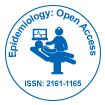Notre groupe organise plus de 3 000 séries de conférences Événements chaque année aux États-Unis, en Europe et en Europe. Asie avec le soutien de 1 000 autres Sociétés scientifiques et publie plus de 700 Open Access Revues qui contiennent plus de 50 000 personnalités éminentes, des scientifiques réputés en tant que membres du comité de rédaction.
Les revues en libre accès gagnent plus de lecteurs et de citations
700 revues et 15 000 000 de lecteurs Chaque revue attire plus de 25 000 lecteurs
Indexé dans
- Index Copernic
- Google Scholar
- Sherpa Roméo
- JournalSeek de génamique
- SécuritéLit
- Accès à la recherche mondiale en ligne sur l'agriculture (AGORA)
- Centre international pour l'agriculture et les biosciences (CABI)
- Recherche de référence
- Université Hamdard
- EBSCO AZ
- OCLC-WorldCat
- Texte intégral du CABI
- Taxi direct
- Publons
- Fondation genevoise pour l'enseignement et la recherche médicale
- Euro Pub
- ICMJE
Liens utiles
Revues en libre accès
Partager cette page
Abstrait
Understanding the Socio-Psychological, Demographic, Obstetric and Treatment-Status Aspects of Fertility Desire among Anti-Retroviral Treatment Clients, Dodota District, Oromia, Ethiopia
Yohannes Kebede, Guta Tola and Ashenafi Habtamu
Background: The reproductive decisions made by partners of and people living with HIV/AIDS (PLWHA) impact the wellbeing of their families. Multi contexts correlates of fertility desire are less studied among Anti-Retroviral Therapy (ARVT) clients.
Methods: We used health facility based cross sectional study design. The study was conducted from February 20 to March 30, 2016 on 242 ARVT clients. A pre-tested and structured questionnaire was used to collect quantitative data. The data were analyzed using the windows statistical package for social science software version 21. Univariate, bivariate and multivariate analysis were used to describe fertility desires and associated factors.
Results: Ninety-five (39.3%) of the ARVT clients wished to have more children. One hundred thirty two (54.5%) of them were using Family Planning (FP) methods. Two-third of, or 91 (68.9%) FP users planned to have no more children. Seventy-six (31.6%) of the respondents gave birth after knowing their HIV sero-status. Young males who had never had child and married respondents were more likely to desire fertility in the foreseable future compared to their counterparts. Respondents, who work as merchants were less likely to wish to have a child compared to the housewives. Two hundred thirty-nine (97.6%) of the respondents generally knew about Prevention of Mother to Child Transmission (PMTCT) of HV/AIDS. This level of knowledge was strongly associated with fertility desire itself. In fact, qualitative findings portrayed social pressure, perceived compensation from giving birth to a healthy newborn and eagerness for confirmation as chief reasons for the desire to give birth to a baby. Knowledge of PMTCT of HIV/AIDS moderated the paths of these chief reasons. Having been followed for a long time in an ARVT clinic and better recent CD4 counts were significant contributors to fertility desire.
Conclusions: Two in every five ARVT clients wish to have a child. To meet their fertility desires; socio-demographic, maternity and psychosocial contexts specific Information-Education-Communication (IEC) should be initiated shortly after enrollment on ARVT. Those who never gave birth, males, married, merchants deserve especial attention.
Revues par sujet
- Agriculture et Aquaculture
- Biochimie
- Chimie
- Food & Nutrition
- Génétique et biologie moléculaire
- Géologie et sciences de la Terre
- Immunologie et microbiologie
- Ingénierie
- La science des matériaux
- Le physique
- Science générale
- Sciences cliniques
- Sciences environnementales
- Sciences médicales
- Sciences pharmaceutiques
- Sciences sociales et politiques
- Sciences vétérinaires
- Soins infirmiers et soins de santé
Revues cliniques et médicales
- Allaitement
- Anesthésiologie
- Biologie moléculaire
- Cardiologie
- Chirurgie
- Dentisterie
- Dermatologie
- Diabète et endocrinologie
- Gastro-entérologie
- Immunologie
- La génétique
- Maladies infectieuses
- Médecine
- Microbiologie
- Neurologie
- Oncologie
- Ophtalmologie
- Pédiatrie
- Recherche clinique
- Soins de santé
- Toxicologie

 English
English  Spanish
Spanish  Chinese
Chinese  Russian
Russian  German
German  Japanese
Japanese  Portuguese
Portuguese  Hindi
Hindi